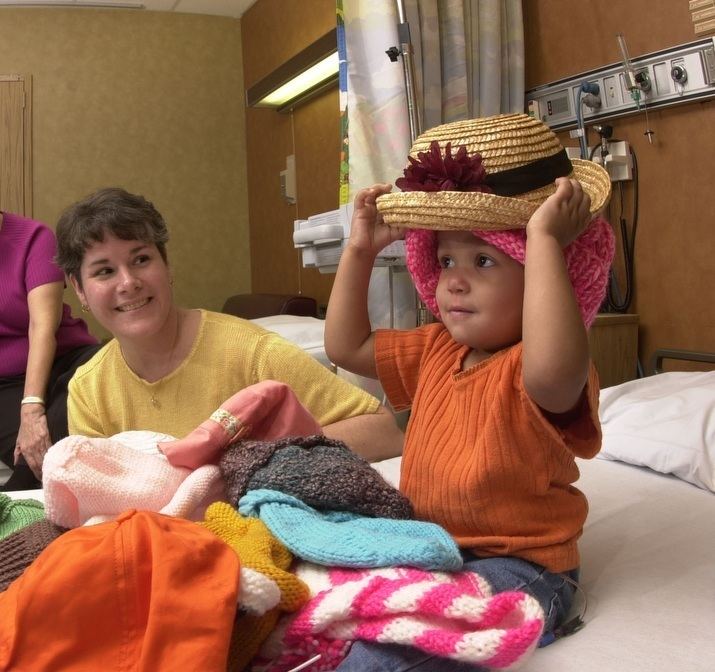 | ||
Childhood cancer (also known as pediatric cancer) is cancer in a child. In the United States, an arbitrarily adopted standard of the ages used are 0–14 years inclusive, that is, up to 14 years 11.9 months of age. However, the definition of childhood cancer sometimes includes young adults between 15–19 years old. Pediatric oncology is the branch of medicine concerned with the diagnosis and treatment of cancer in children.
Contents
Worldwide, it is estimated that childhood cancer has an incidence of more than 175,000 per year, and a mortality rate of approximately 96,000 per year. In developed countries, childhood cancer has a mortality of approximately 20% of cases. In low resource settings, on the other hand, mortality is approximately 80%, or even 90% in the world's poorest countries. In many developed countries the incidence is slowly increasing, as rates of childhood cancer increased by 0.6% per year between 1975 and 2002 in the United States and by 1.1% per year between 1978 and 1997 in Europe.
Types
The most common cancers in children are (childhood) leukemia (32%), brain tumors (18%), and lymphomas (11%). In 2005, 4.1 of every 100,000 young people under 20 years of age in the U.S. were diagnosed with leukemia, and 0.8 per 100,000 died from it. The number of new cases was highest among the 1–4 age group, but the number of deaths was highest among the 10–14 age group.
In 2005, 2.9 of every 100,000 people 0–19 years of age were found to have cancer of the brain or central nervous system, and 0.7 per 100,000 died from it. These cancers were found most often in children between 1 and 4 years of age, but the most deaths occurred among those aged 5–9. The main subtypes of brain and central nervous system tumors in children are: astrocytoma, brain stem glioma, craniopharyngioma, desmoplastic infantile ganglioglioma, ependymoma, high-grade glioma, medulloblastoma and atypical teratoid rhabdoid tumor.
Other, less common childhood cancer types are:
Risk factors
Familial and genetic factors are identified in 5-15% of childhood cancer cases. In <5-10% of cases, there are known environmental exposures and exogenous factors, such as prenatal exposure to tobacco, X-rays, or certain medications. For the remaining 75-90% of cases, however, the individual causes remain unknown. In most cases, as in carcinogenesis in general, the cancers are assumed to involve multiple risk factors and variables.
Aspects that make the risk factors of childhood cancer different from those seen in adult cancers include:
Also, a longer life expectancy in children avails for a longer time to manifest cancer processes with long latency periods, increasing the risk of developing some cancer types later in life.
There are preventable causes of childhood malignancy, such as delivery overuse and misuse of ionizing radiation through computed tomography scans when the test is not indicated or when adult protocols are used.
Incidence and mortality
Internationally, the greatest variation in childhood cancer incidence occurs when comparing high-income countries to low-income ones. This may result from differences in being able to diagnose cancer, differences in risk among different ethnic or racial population subgroups, as well as differences in risk factors. An example of differing risk factors is in cases of pediatric Burkitt lymphoma, a form of non-Hodgkin lymphoma that sickens 6 to 7 children out of every 100,000 annually in parts of sub-Saharan Africa, where it is associated with a history of infection by both Epstein-Barr virus and malaria. In industrialized countries, Burkitt lymphoma is not associated with these infectious conditions.
US
In the United States, cancer is the second most common cause of death among children between the ages of 1 and 14 years, exceeded only by accidents. More than 16 out of every 100,000 children and teens in the U.S. were diagnosed with cancer, and nearly 3 of every 100,000 died from the disease. In the United States in 2012, it was estimated that there was an incidence of 12,000 new cases, and 1,300 deaths, from cancer among children 0 to 14 years of age. Statistics from the 2014 American Cancer Society report:
Ages birth to 14
Ages 15 to 19
Note: Incidence and mortality rates are per 1,000,000 and age-adjusted to the 2000 US standard population. Observed survival percentage is based on data from 2003-2009.
UK
Cancer is relatively rare in children, accounting for less than 1% of all cancers (around 1,600 children are diagnosed with cancer each year), and it is the leading cause of death in children aged 1–14 (around 250 children die from cancer each year).
Organizations
Organizations focused on childhood cancer through cancer research and/or support programs include: Childhood Cancer Canada, CLIC Sargent and the Children's Cancer and Leukaemia Group (in the United Kingdom), Child Cancer Foundation (in New Zealand), Children's Cancer Recovery Foundation (in United States), American Childhood Cancer Organization(in the United states), Childhood Cancer Support (Australia) and the Hayim Association (in Israel).
The International Childhood Cancer Day occurs annually on February 15.
Learning problems
Children with cancer are at risk for developing various cognitive or learning problems. These difficulties may be related to brain injury stemming from the cancer itself, such as a brain tumor or central nervous system metastasis or from side effects of cancer treatments such as chemotherapy and radiation therapy. Studies have shown that chemo and radiation therapies may damage brain white matter and disrupt brain activity.
Adult survivors
Adult survivors of childhood cancer have some physical, psychological, and social difficulties.
Premature heart disease is a major long-term complication in adult survivors of childhood cancer. Adult survivors are eight times more likely to die of heart disease than other people, and more than half of children treated for cancer develop some type of cardiac abnormality, although this may be asymptomatic or too mild to qualify for a clinical diagnosis of heart disease.
